There are more than 200 species of owls in the world and they inhabit every continent except Antarctica. They vary widely in size, with the smallest being just a few inches long. But how big can owls be? Read on to discover the largest owls in the world, ranked by their wingspan!
13. Long-Eared Owl
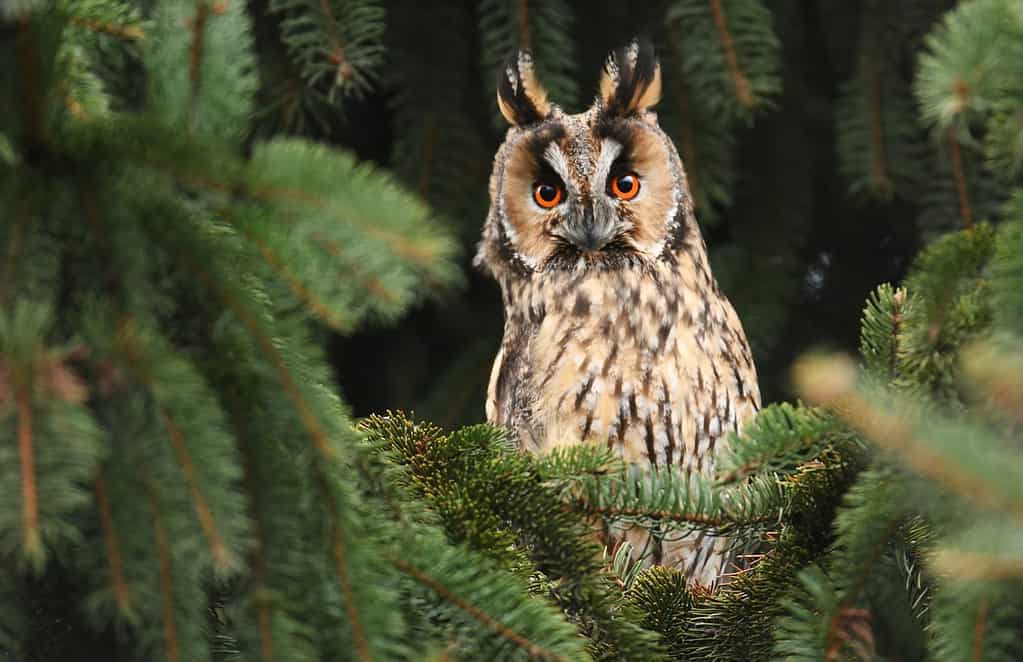
The long-eared owl is easily recognizable due to its log ear tufts.
©Piotr Krzeslak/Shutterstock.com
The first owl on the list is the long-eared owl with a wingspan of a little over three feet. Long-eared owls are named for their prominent ear tufts which distinguish them from the short-eared owl. Long-eared owls are brownish-colored with bright orange eyes. They have a wide distribution and typically inhabit woodlands and farmland.
12. Tawny Owl
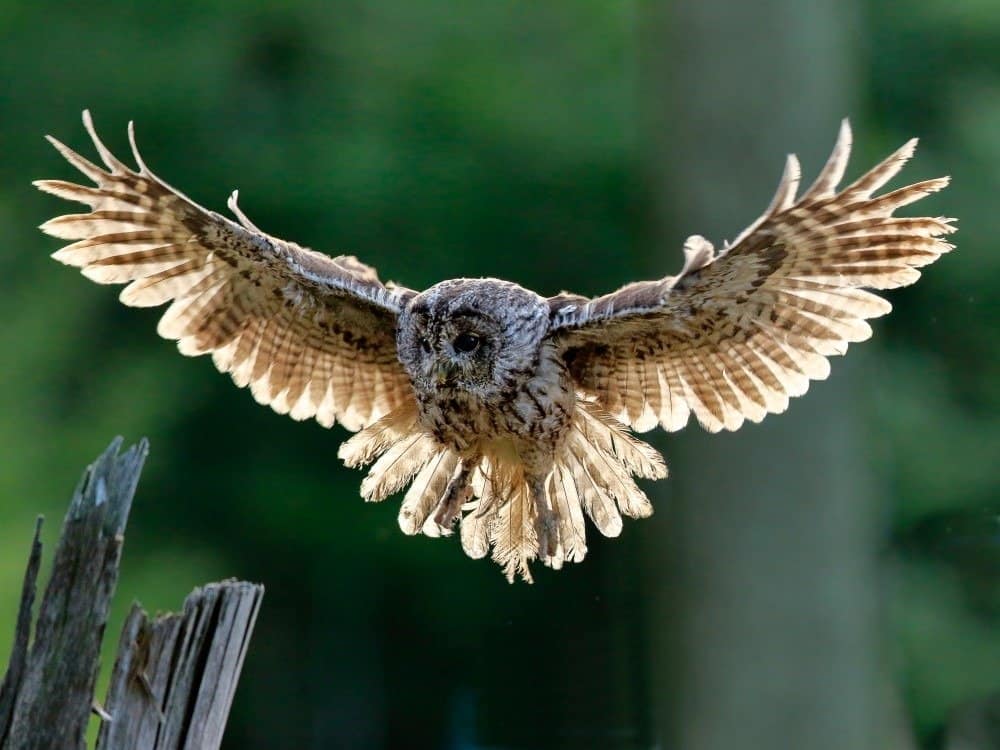
Tawny owls have a wingspan of up to 41 inches.
©Daniel Dunca/Shutterstock.com
The tawny owl has a slightly larger wingspan, which can be up to 41 inches long. Tawny owls are also known as brown owls and have a combination of light and dark brown feathers on their bodies. Their underside is paler but has dark streaks. Tawny owls are widespread across Europe but also inhabit parts of Africa and Asia. They typically inhabit forests and nest in holes in trees.
11. Short-Eared Owl
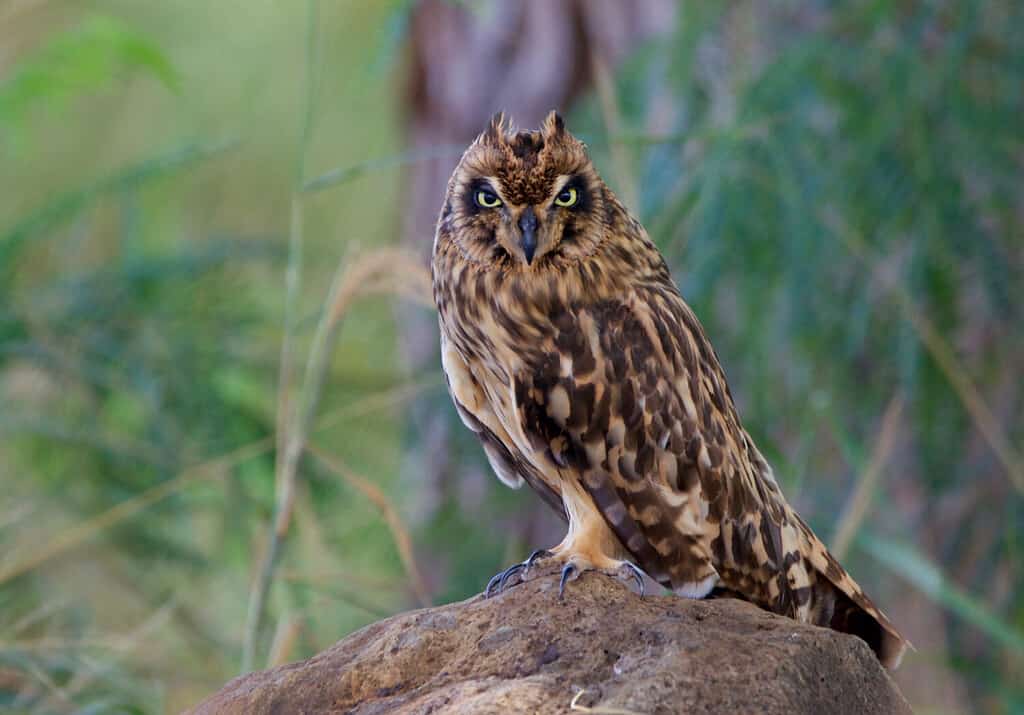
Short-eared owls are named for their short-ear tufts.
©Jessie Lynn Croft/Shutterstock.com
The short-eared owl is slightly larger than its long-eared counterpart, with a wingspan of around 3.5 feet. Short-eared owls have a mottled brown appearance with a pale-colored underside. Short-eared owls inhabit every continent except Antarctica and Australia. They typically inhabit moors and grasslands. However, they are ground-nesting birds, and nests consist of a hollow on the ground that is lined with feathers and grass.
10. Spotted Owl
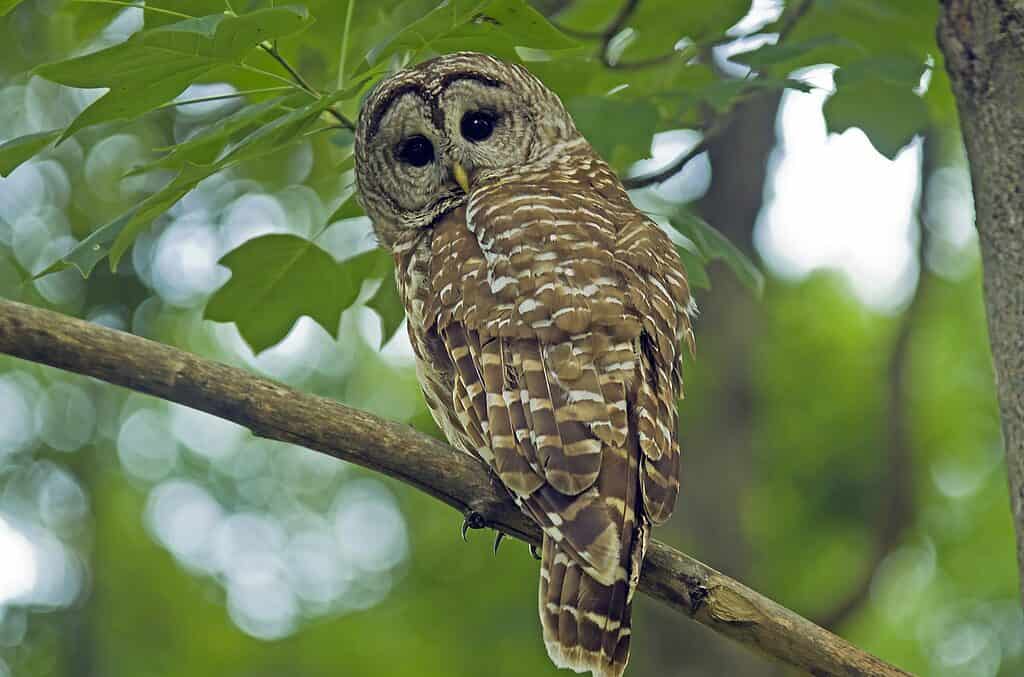
Spotted owls have a wingspan of around four feet.
©C.M.Corcoran/Shutterstock.com
The next largest owl is the spotted owl, which has a wingspan of almost four feet. Spotted owls have a dark brown appearance with white spots. They also have several cross-shaped markings on their underside. Spotted owls inhabit Canada, the US, and Mexico, where they live in coniferous and hardwood forests. They nest in cavities in trees or nests created by other animals, such as squirrels.
9. Barred Owl

Barred owls have distinctive brown and white plumage.
©FotoRequest/Shutterstock.com
The next owl is the barred owl, which has a similar appearance to the spotted owl. Barred owls are brown with white barred markings and have a wingspan of 38 to 45 inches. Barred owls live in the southern region of Canada and the eastern region of the US, but have now expanded into the Pacific Northwest. They typically inhabit woodlands and forests. They are nocturnal birds and prey on a wide range of birds, mammals, and reptiles.
8. Barn Owl
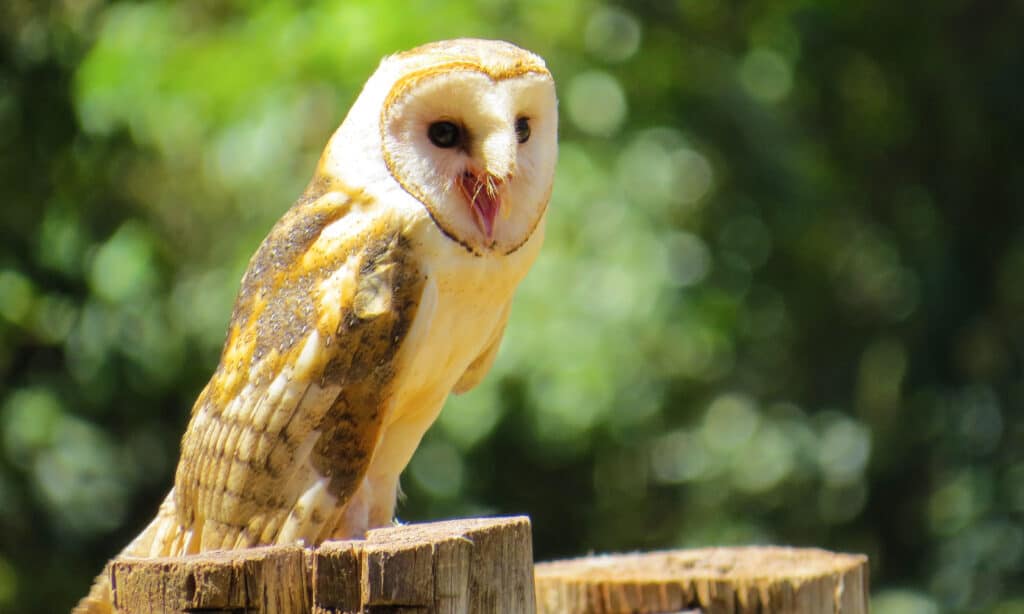
Barn owls typically inhabit farmland where they can nest in old barns.
©DEBORA DUARTE LISBOA/Shutterstock.com
The next owl on the list is the barn owl which has a wingspan of approximately three to four feet. They have a pale appearance with buff-colored bodies and white faces and undercarriages. Barn owls have a wide distribution around the world and occur on every continent except Antarctica. As their name suggests, they are typically found around barns and farms, although they prefer to hunt in open grasslands and fields.
7. Powerful Owl
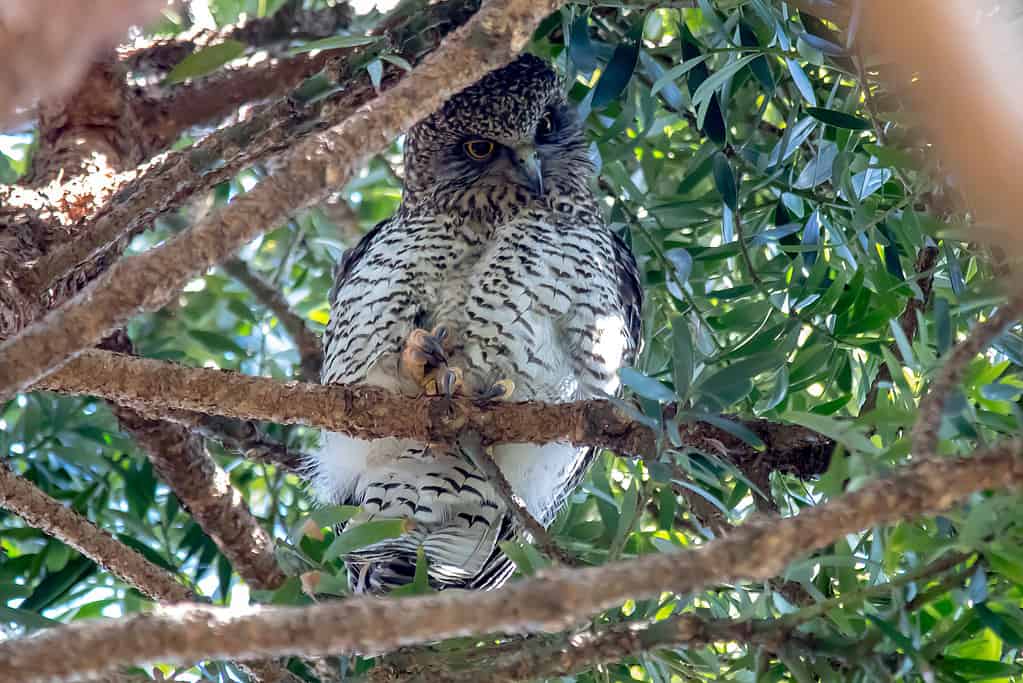
Powerful owls are the largest owls in Australia.
©Andrew Allen, CC BY 4.0, via Wikimedia Commons – License
As you might expect from their name, the powerful owl is a large bird with a wingspan of 44 to 53 inches. Powerful owls are dark brown with white barred markings. They also have a fairly long tail, which gives them a relatively hawk-like appearance. Powerful owls are native to Australia and are the largest owl in the country. They live in forests and mangroves, where they prey on a variety of animals, such as sugar gliders, possums, and bats.
6. Great Horned Owl
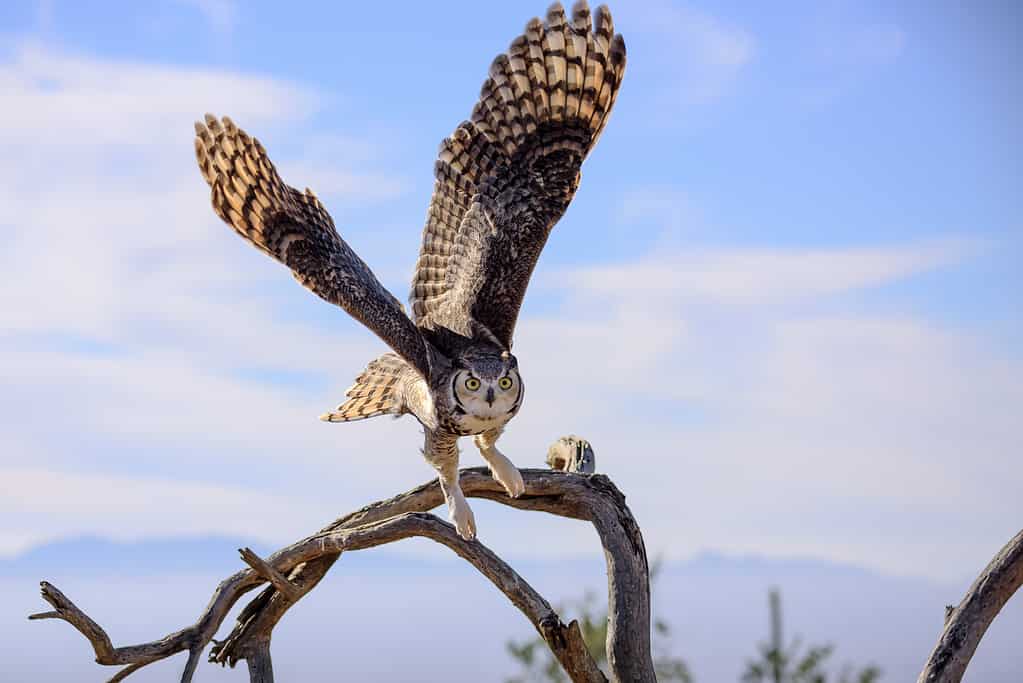
Great horned owls use nests created by other birds.
©iStock.com/kojihirano
The great horned owl takes the next spot with a wingspan of up to 4.6 feet. Like the long-eared owl, these owls have distinctive ear tufts. They are typically brown with a mottled appearance but have lighter underparts. Great horned owls are widely distributed across North and South America and live in a wide range of habitats. They nest in trees but do not usually build their own nests, preferring instead to use nests built by other birds.
5. Snowy Owl
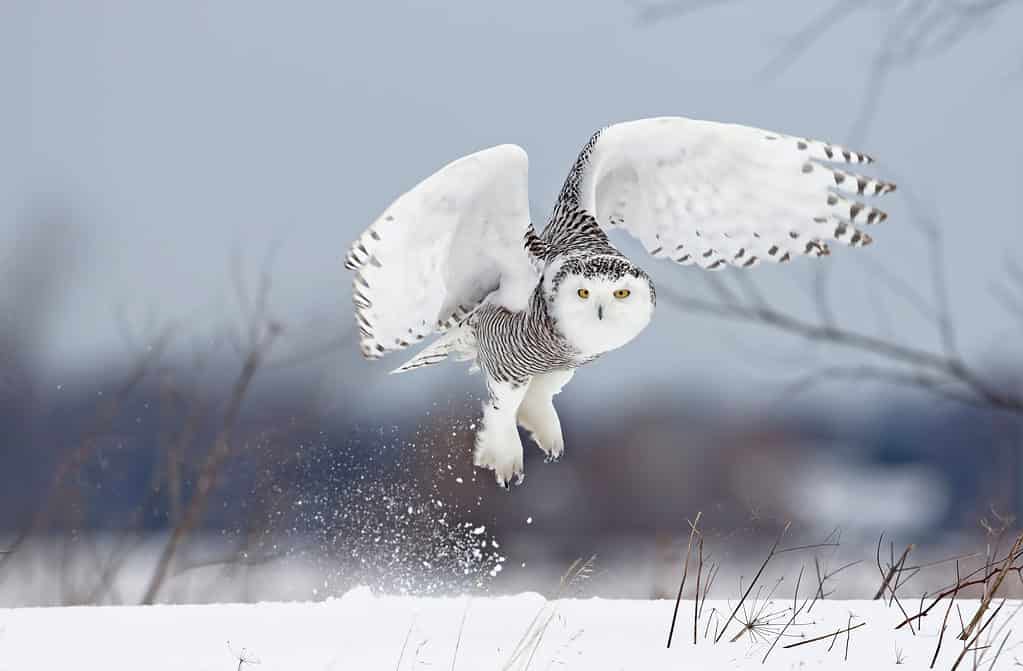
The stunning snowy owl typically inhabits the Arctic tundra.
©Jim Cumming/Shutterstock.com
The next largest owl is the iconic snowy owl which has a wingspan of up to five feet. Snowy owls have a distinctive white appearance which is often overlaid with black or brown markings. These stunning birds typically inhabit the Arctic region, although they may sometimes be observed further south. They prefer open areas such as grasslands or the Arctic tundra. Snowy owls are active during both the day and the night and may hunt at any time.
4. Great Gray Owl

The great gray owl has a distinctive white marking on its neck.
©Edwin_Butter/iStock via Getty Images
Also with a wingspan of up to five feet is the great gray owl, which is also considered to be the longest owl in the world, with a length of 24 to 33 inches. Great gray owls are grayish-brown and white with gray faces. They also have a distinctive white marking on their neck which is often described as looking like a “bow tie”. Great gray owls inhabit coniferous forests in the northern hemisphere.
3. Verreaux’s Eagle Owl
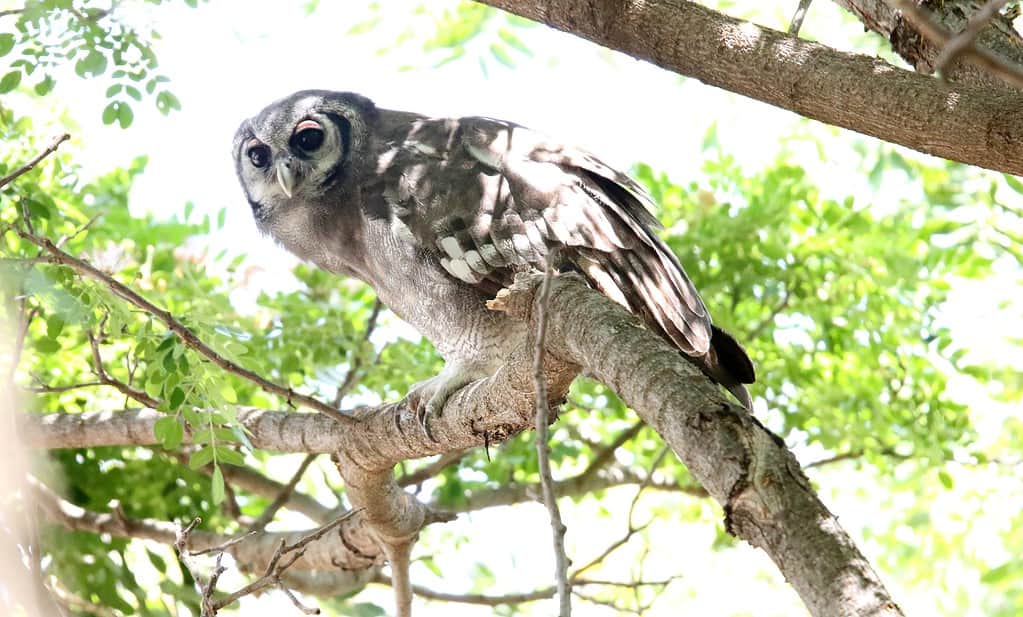
Verreaux’s eagle owls are the largest owls in
Africa
.
©Dominic Sherony, CC BY-SA 2.0, via Wikimedia Commons – License
The largest owl in Africa is Verreaux’s eagle owl, with a wingspan of up to 6.5 feet. Verreaux’s eagle owls are grayish-colored with brown and white markings. Verreaux’s eagle owls are native to sub-Saharan Africa, where they mainly inhabit savannahs. They typically lay their eggs in nests that have been built by other birds, rather than building one themselves. Verreaux’s eagle owls are powerful predators and have a largely opportunistic nature, preying on virtually anything that they can catch.
2. Eurasian Eagle Owl
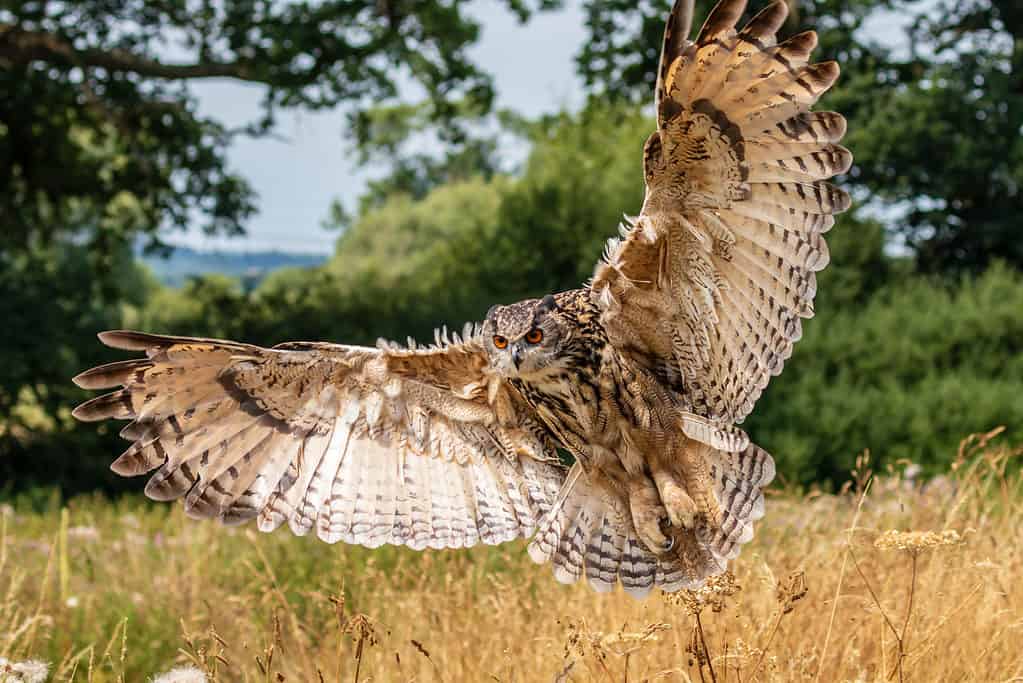
Eurasian eagle owls have a massive wingspan of 6.5 feet.
©Richard Whitcombe/Shutterstock.com
The Eurasian eagle owl also has a wingspan of up to 6.5 feet. Like several of the other owls on the list, Eurasian eagle owls have noticeable ear tufts. They also have a mottled brown appearance with orange ears. Eurasian eagle owls are widely distributed around the world and live in a range of habitats, including grasslands, woodlands, and mountains. The males typically create the nests which are shallow depressions on the ground. They are nocturnal owls and eat a wide range of birds and mammals.
1. Blakiston’s Fish Owl
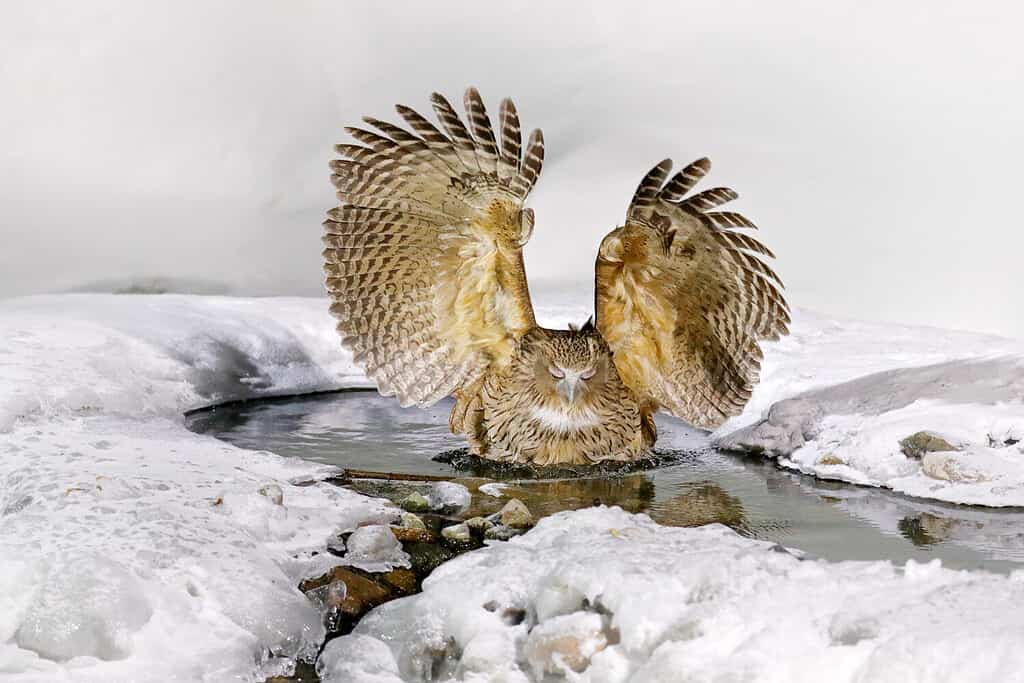
Blakiston’s fish owls prey predominantly on fish.
©Ondrej Prosicky/Shutterstock.com
The largest owl in the world is Blakiston’s fish owl with a wingspan of up to 6.6 feet. These owls are tan to brown with darker markings. They have ear tufts, although they do not have an upright appearance like most owls. Instead, they are situated more to the side of the head. Blakiston’s fish owls live in China, Japan, and Russia, where they inhabit old-growth forests and areas close to wetlands. As their name suggests, these owls prey mainly on fish, such as salmon, trout, and pike. They have particularly long talons, which make it easier to seize and hold slippery prey,
The photo featured at the top of this post is © MZPHOTO.CZ/Shutterstock.com
Thank you for reading! Have some feedback for us? Contact the AZ Animals editorial team.






